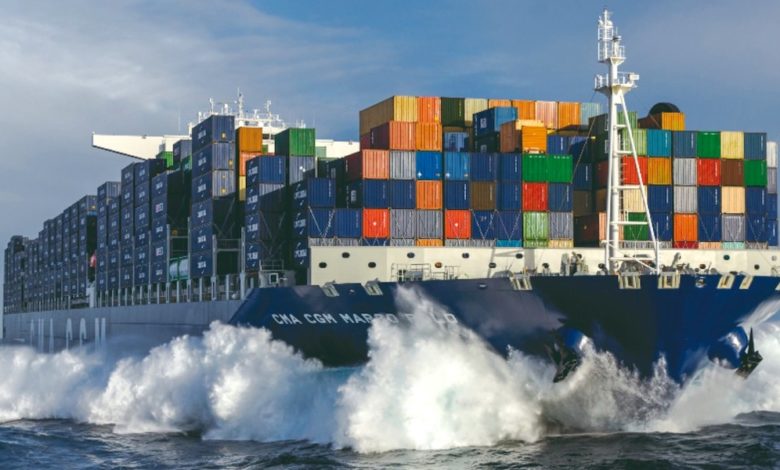Container markets hit a plateau

October starts with a clear impression that the red-hot container shipping market has hit a plateau after all manner of records were broken in the previous month.
September saw boxship charter rates hit $200,000 a day, and companies shelling out incredible sums for tonnage – a six-year-old, 6,865 teu vessel fetching $135m for instance, while the Shanghai Containerized Freight Index (SCFI), a key bellwether of spot rates, soared past 4,500 points.
Now, however, the SCFI and other box shipping indices are all looking like they have peaked. The SCFI was down 29.69 points yesterday to 4614.1, its first decline for many weeks.
It’s difficult to see much relief on the horizon for shippers
The spot market easing comes as Hapag-Lloyd and CMA CGM both publicly stated last month they’ve stopped seeking spot rises from customers for the coming months.
The Freightos Baltic Index (FBX) has also hit a peak. Asia-North America prices fell 16% this week, but are still more than four times their level last year, and about 10 times typical rates before the pandemic.
“The dip may also hint that the peak of peak season demand – with delays making it possible that shipments not already en route may not make in time for the holiday season – could be behind us,” Freightos’s head of research Judah Levine suggested in an update yesterday.
Drewry’s World Container composite index inched down by just 0.2% this week to settle on $10,360.87 per feu. Drewry said yesterday it expects rates to remain steady in the coming week.
Xeneta CEO Patrik Berglund, the publisher of another box shipping index, the XSI, said the move by CMA CGM and Hapag-Lloyd to go public on rate freezing was likely to be seen by many shippers as “crumbs from the rich man’s table”.
In an update yesterday, Berglund said: “Port congestion remains high, especially in key hubs such as LA, Long Beach, New York and Hamburg, and equipment is in short supply. Seen against strong pre-festive season demand, and stubbornly high spot rates, it’s difficult to see much relief on the horizon for shippers.”
Xeneta has just provided an additional piece on information on the XSI data. Under its methodology, the XSI rate does not include premium surcharges applied by the carriers to guarantee space and equipment. Xeneta has now provided data on the magnitude of these.
On the Asia – US west coast the premium is anywhere from $500 to $10,500 per container on top of the index of $8,800, while on Asia – Europe trades the premium is between $1,500 and $4,000 per container on top of the index hovering around $14,000.
Commenting on this newly released data, Lars Jensen, CEO of container advisory Vespucci Maritime, said: “This is an important additional piece of information. Not because of the magnitude, but because of the extreme spread seen in the premium pricing. This exemplifies why the competitive situation between the shippers themselves is changing as they are clearly not all equally disadvantaged in terms of freight costs.”
As spot rates peak, so too are charter prices. Alphaliner suggested last week that charter rates are approaching their peak, with prices increasingly plateauing across the board, especially for long period charters.
Similarly, there are signs of a plateau being reached in terms of secondhand ship prices. Moreover, available candidates to buy are increasingly hard to find.
